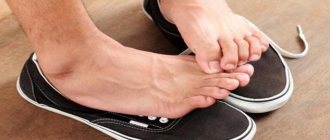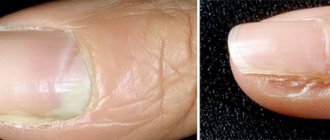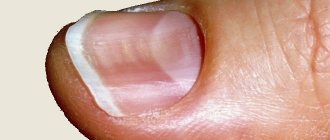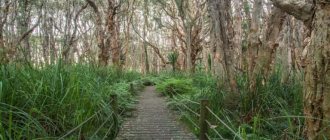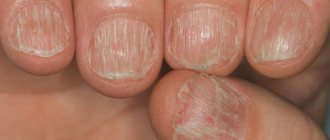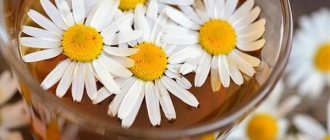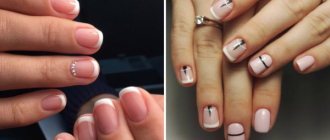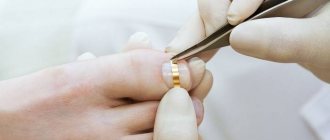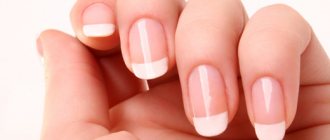Fungus on the fingernails and toenails can occur in people of all ages and is the most common form of fungal infection. The types and types of the disease depend on the pathogen, and the characteristics of the course depend on the stage of the disease and the localization of the infection. Fungal spores tend to develop in any tissue. These can be mucous membranes, internal organs, nail plates. The disease itself does not go away; it must be treated patiently and for a long time using drug therapy and traditional methods of treatment.
All varieties and forms of onychomycosis are contagious, so the carrier must follow the rules of hygiene and not endanger others. The disease is transmitted through common bathing areas, when using other people's hygiene items, or wearing clothes and shoes after the patient. The consequences of the fungus can be serious - from the spread of infection to adjacent plates and skin to damage to internal organs. Therefore, you need to start fighting the disease in a timely manner, and for this you should know how to determine the type of onychomycosis and what signs of fungal infection exist.
Nail fungus – what is it?
In medical terminology, nail fungus is called onychomycosis. The nail plate becomes infected upon contact with spores, then rapid growth of fungal bodies begins, affecting the nail in depth and breadth.
This pathological condition is most often observed in elderly people. The occurrence of the disease is influenced by the following factors:
- excessive body weight;
- diseases of the digestive system;
- weakening of the immune system;
- impaired function of the thyroid gland or adrenal glands;
- improper hygiene.
Experts identify several stages and forms of fungal infection.
Why does onychomycosis develop?
The reasons for the appearance of toenail fungus lie in negative living conditions, poor attention to self-care and some other factors beyond a person’s control.
- Weakening of the immune system. The human body has a natural resistance to various infections, including fungal infections. This is called the immune system, but when it begins to malfunction, harmful microorganisms multiply at an accelerated rate because they are not properly destroyed.
- Undergoing therapy with drugs that provoke the development of a fungal infection, for example, cytostatics, corticosteroids, antibiotics.
- Hormonal and metabolic imbalance in the body.
- Preference for shoes that do not meet hygiene and safety requirements.
- Receiving frequent injuries to the toes and hands.
It is important to know that the disease is curable. There is a whole arsenal of external remedies and tablet dosage forms for this. But only a doctor can tell you how, with what and for how long to treat the disease. Self-medication can delay the process for years and add a lot of suffering to you.
Forms of fungus
Symptoms of the disease depend on the form of the fungus:
- Atrophic. A gray tint appears on the nail, and the plate becomes pale and dull. The nail begins to atrophy from the outer ends.
- Hypertrophic. As a result of the active growth of skin scales, the nail plate thickens by more than 2 millimeters. Nail deformation depends on the severity of the pathology. Shade – gray or dark yellow. One of the signs of such a fungus is considered to be similar to a bird's claw.
- Normotrophic. The color of the nail with this type of fungus changes, but the shine and thickness remain the same. In the first stages, spots from white to yellow appear. If the disease is not treated, they become larger in size. In this case, the plate does not adhere to the nail bed.
- Proximal. This fungus spreads to the skin fold. Possible pain in the cuticle area.
- Total. This infection develops if treatment for other types of fungi is ignored. Accompanied by loss of color and shine, crumbling and fragility. The result is complete destruction of the nail plate.
- Superficial white fungus. Characterized by the formation of white spots and stripes that spread over the entire nail.
- Distal. The lesion is accompanied by dullness, loss of color and changes in the thickness of the nail plate. After the affected area dies, the nail becomes deformed and crumbles.
- Lateral. There is swelling of the skin ridges, their redness and thickening. Characterized by soreness in the area near the nail. When a bacterial infection attaches, a purulent process begins.
Depending on the severity of the pathology, appropriate treatment is prescribed.
Modern antifungal agents
The professional advice of dermatologists and infectious disease specialists is to give preference to topical preparations. They have significant advantages over tablets and injections. Ointments, gels, solutions applied to the nail surface are effective, but have no negative side effects.
Tablets passing through the gastrointestinal tract cause pathology of the digestive organs. Their effect is weakened. Recommended tablet antifungal medications include: Fluconazole, Lamisil, Nizoral, Orungal, Diflucan, Intrazol, Fungavis and others.
Popular external preparations are Exoderil, Lamisil, Nizoral, Mycozoral, Fundizol in the form of creams, Lamisil sprays, Terbix, Thermikon, Lamitel, Fungoterbin, as well as Nitrofungin solution.
Don't forget about antifungal varnish. This is a convenient tool that many women now use. The coating can be applied under cosmetic varnish, so it is doubly useful - it helps to hide a defect in the nail plate.
Now you know what a fungus is, the reasons for the formation of the disease, and you know how dangerous the disease is. All that remains is to listen to the opinion of experts and start getting rid of the problem in a timely manner.
Typical clinical picture
Clinical manifestations of fungal nail infections include:
- a burning sensation and itching of the skin near the affected area;
- nail fragility;
- swelling of the affected area;
- active detachment of the plate;
- color changes (black, yellow, gray, green, brown tint indicates a pathological process);
- painful sensation in the place where the fungus is localized;
- nail deformation.
If treatment is ignored or inappropriate therapy is observed, keratinization of the plate and an increase in compaction are observed.
Stages of fungal nail infection
Experts distinguish three stages of the disease. Each of them is characterized by certain symptoms:
- 1st. It is difficult to determine visually. It appears as small pale spots on the nails.
| The initial stage of fungal nail infection |
- 2nd. Furrows form, the color of the plate begins to change, and the shine is lost.
| Photograph of the secondary stage |
- 3rd. The skin around the nail plate begins to turn red and hurt. There is separation and deformation of the nail.
| Advanced case of nail fungus |
Only a qualified specialist can diagnose a fungal infection.
About complications of fungal infection
What can be the consequences of an infectious process on the nails should be known to everyone who has had such an illness. Despite the fact that often the nail itself does not hurt, the disease cannot be ignored. Because it will be an obstacle to wearing elegant shoes, a reason for embarrassment in front of others. But onychomycosis is also characterized by more serious complications. Among them are those that cause significant harm to health.
- A severe untreated form of onychomycosis can cause drug-induced toxicoderma. It can be acute or chronic and occurs as an allergic reaction. Caused by the entry into the blood of toxins that are produced during the development of infection.
- A somatic disease caused by mycosis is hepatopathy. This is a degenerative lesion of liver cells that ends in liver failure.
- Lyell's syndrome is epidermal necrolysis of toxic etiology and has a tendency to become malignant.
Analyzing this formidable list, we can conclude that a cosmetic defect and loss of attractiveness of the toes are only a small fraction of the harm that ochinomycosis can cause you. Therefore, do not delay treatment; the sooner it is started, the less risk of becoming a chronically ill person.
Places at risk of infection
Infection can occur in a damp and warm place where the fungus grows quickly. Therefore, you should be careful and adhere to the rules of hygiene in a public environment:
- sauna;
- shower cabin;
- bath;
- gym;
- solarium;
- public locker room;
- beach;
- pool.
You can catch nail fungus by trying on someone else's shoes. In addition, infection can occur in a beauty salon during a pedicure procedure if unsterile instruments are used or the master has a fungus on his hands and performs the manipulation without gloves.
Pharmacies hid it!
Even “neglected” nail fungus can be cured at home. The product is provided free of charge! Just remember to apply twice a day….
>
How to understand that you have contracted mycosis and how to treat it?
It’s easy to find out what toenail fungus looks like, just look at photos on the Internet on this topic and it will become clear to you whether you have it or not. But remember that the final diagnosis can only be made by a doctor after a visual examination and examination of scrapings under a microscope in the laboratory. This is necessary to determine which pathogen caused the infection and choose the correct treatment algorithm.
How to treat the “insidious” disease of children and adults is a question for specialists. You must understand that choosing universal products is more economical. They will help all members of your family. But there are still some peculiarities of therapy.
Mold and yeast fungi are treated with different sets of medications, so wait for the doctor’s prescription and only then go to the pharmacy. Antifungal drugs are expensive, and it is not recommended to buy them at random. And given the fact that treatment will take a long time, then draw the right conclusion for yourself.
Alternative remedies to combat nail fungus
There are a large number of alternative methods to combat fungal infections.
In folk medicine, popular and effective procedures that help eliminate fungus are:
- compress;
- foot bath;
- lotions;
- applying ointments from herbal products.
Effective antifungal alternative therapies are:
- Garlic ointment. To prepare it, butter is mixed with grated garlic. Apply for several hours to affected nails.
- Bath with sea salt. Make a warm solution and keep your feet in it for thirty minutes. After the procedure, it is recommended to apply olive oil to your nails.
- Foot bath with a decoction of calendula, celandine, horsetail or milkweed.
- Mint and salt compress. A spoonful of salt is mixed with the crushed plant and applied to the problem area for several hours.
- Propolis lotion. A cotton pad is moistened in the tincture and applied to the affected nail.
- Lubricating the diseased nail plate with celandine juice.
- Egg-honey mixture. Honey, birch tar and sulfur are added to the egg white. Mix thoroughly and apply to nails.
- Ammonia compress. A spoonful of ammonia is diluted in a glass of water. The material intended for the procedure is soaked in the liquid.
- Apricot resin. An alcohol tincture is prepared from tree resin using the ingredients in equal parts. Using this remedy, make a compress.
- Coffee bath. They make strong coffee and pour it into a basin. It is recommended to soak your feet in this product for twenty minutes.
- Tar compress. For this procedure, take birch tar.
- Bath based on Listerine, apple cider vinegar and lemon juice.
- Hydrogen peroxide compress. Before using it, it is recommended to make a soda foot bath.
- Applying onion pulp to the sore nail.
An effective folk remedy for fungal infections is a remedy made from baking soda and apple cider vinegar. To prepare it you need the following ingredients:
- apple cider vinegar – 250 ml;
- baking soda – 150 g;
- water (hot) – 3 l.
Foot baths are made with this medicine. The peculiarity of this procedure is that first the feet are placed in a vinegar solution for twenty minutes. Then after a while they take a bath with soda. It is recommended to do the procedure several times a day.
- Compresses can also be made from the following ingredients:
- chopped horseradish (root);
- sunflower oil and vinegar (product ratio 1:1);
- tea mushroom;
- tangerine juice;
- tea tree oil;
- pureed rowan.
It is recommended to apply these products to the affected area at night.
Herbalists advise putting crushed medicinal herbs into your socks for foot fungus:
- mint;
- chamomile;
- nettle;
- sage.
The first signs of the disease can be overcome by soaking your feet in a solution of laundry soap.
| Results of fungal therapy with alternative means |
It is important to remember that alternative medicines should only be used on well-washed feet. Dead layers must be removed each time using a nail file or scissors.
Consequences and prevention of fungus
If treatment is untimely or incorrectly selected, not only complete destruction of the nail occurs, but also damage to nearby tissues and deep layers of the epithelium by fungal infection.
To protect yourself from onychomycosis, you should follow a number of preventive recommendations:
- wear personal shoes of the appropriate size;
- treat shoes and boots with antifungal substances (formalin, chlorhexidine, vinegar);
- constantly observe the rules of personal hygiene of the lower extremities;
- use personal care products (do not use other people’s towels, slippers, etc.);
- avoid excessive sweating of the feet;
- after taking a shower, you need to wipe your entire body dry;
- eat properly and balanced, take vitamin complexes as needed (especially in the autumn-winter period).
Almost all types of nail fungus die in hot water, an acidic environment, and cannot tolerate exposure to iodine-containing substances, alcohol, salt and soda. Using traditional medicine and following simple preventive measures will help you get rid of this unpleasant disease forever.
